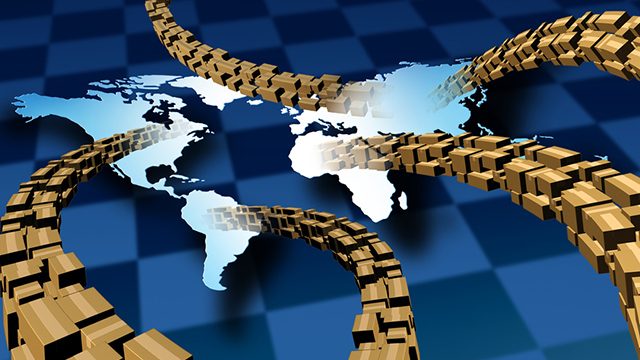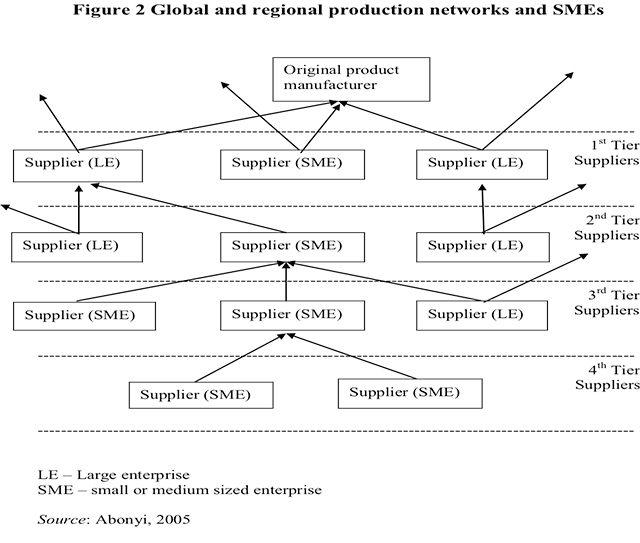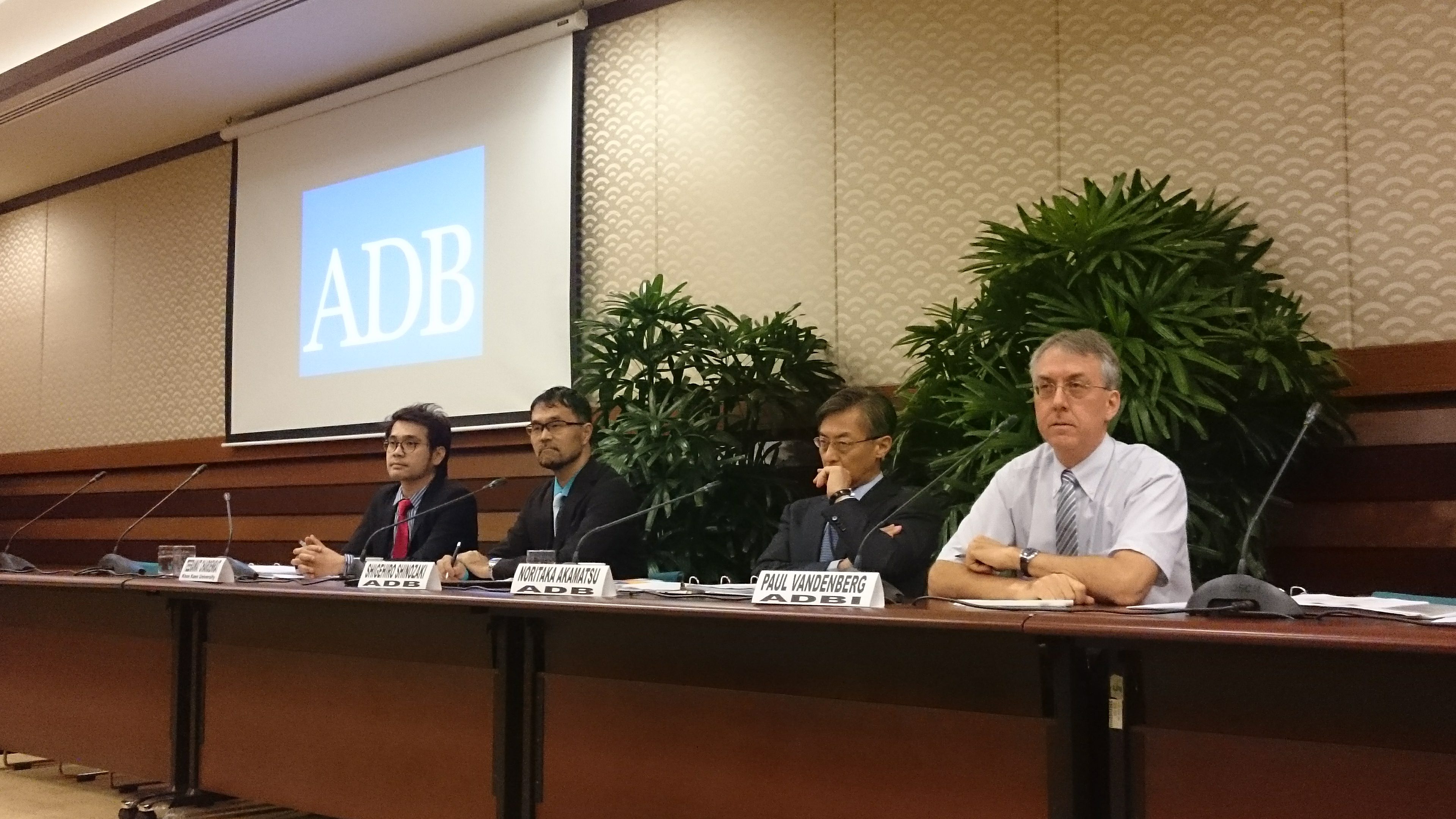SUMMARY
This is AI generated summarization, which may have errors. For context, always refer to the full article.

MANILA, Philippines – Globalization has changed the way products are made, and small to medium enterprises in Asia are well positioned to take off as a result of this, the Asian Development Bank said, concluding a two-day seminar featuring SME experts on Thursday, September 3.
Globalization and rapid advancements in technology has given rise to Global Value Chains (GVCs), or cross-border production sharing, which have enabled SMEs to participate in the production of items like automobiles, suppliers of component parts.
“Since the 1990s, global value chain networks have developed rapidly in many developed and developing countries in Asia,” said professor Teerawat Charoenrat of Thailand’s Khon Kaen University, a speakers at ADB’s Financial Accessibility for SMEs in Asia and the Pacific event. (READ: Helping SMEs get financing key to Asia’s continued growth – ADB)
These GVCs have been driven by global competition and the adoption of new business models based on global markets, global sourcing, and flexible production, Charoenrat explained.
The Association of Southeast Asian Nation (ASEAN) Economic Community (AEC), which essentially eliminates borders and trade barriers between ASEAN members and regional trade partners, has also provided extra incentive for the expansion of GVCs in the region, he added.
This in turn presents new market opportunities for regional SMEs.
“The challenges facing SMEs are many but the opportunities, if suitably exploited, have the potential to result in the development of dynamic and competitive SME sectors in regional and global economies,” Charoenrat said.
Opportunity for ASEAN SMEs
SMEs are the backbone of ASEAN economies, accounting for an average of 96% of all registered firms and employing 62% of the labor force of developing Asia. However they contribute only 42% of economic output.
SMEs in the Philippines, Singapore, Malaysia, and Thailand actively import and export machinery parts and components, while Indonesia, Vietnam, Myanmar, Cambodia, and Laos are increasingly participating in new GVCs, Charoenrat shared.
This has fundamentally changed the pattern of foreign direct investment (FDI) in the region and will only increase as China moves up the production ladder from low labor cost and low value added parts of the production chain, he added.
The changing global situation, he said, makes it a critical issue for policymakers to figure out how best to ensure that SMEs link up to the multiple GVCs being created.
GVCs essentially allow for production processes to be separated in many stages and countries around Asia to take advantage of lower labor costs or investment incentives, Charoenrat explained.
At the top of the chain is usually a multinational corporation (MNC) like Toyota, that manufactures the final product. The individual SMEs usually supply component parts or intermediate goods such as car windows, headlights, or wire harnesses.
With this set up, a slight decline in trade costs, such as a fall in oil prices, induces large increases in trade in intermediate goods, since goods may move across national borders multiple times, he said.
For example, an intermediate good is exported from country A to country B, then is imported back to country A after processing in country B. In this case, the good crosses each national border twice, a total of 4 border crossings.


Policies to help internationalize SMEs
“Governments in ASEAN and the Pacific Rim have seen the importance of SMEs and know that markets are globalizing so they are putting these two together to take advantages of the opportunities presented,” said Paul Vandenberg, senior economist at the ADB Institute.
Evidence of this is the inclusion of “fostering SMEs’ participation in regional and global markets” among the priorities detailed in the Boracay Action Agenda, formulated at an APEC Ministers Responsible for Trade meeting held in Boracay in May.
Trade Secretary Gregory Domingo also previously shared that MSMEs (micro and small to medium enterprises) remain a vital part of the Aquino administration’s plans.
Domingo said saying the government is drafting at least 50 industry roadmaps to identify how MSMEs can fit into various industry value chains. (READ: Despite SONA 2015 snub, small businesses still gov’t priority)
Apart from the critical role that government can play in helping SMEs gain more financing, Vandenberg also laid out other less apparent areas such as facilitating SME’s foreign market access, skills, and technology where the public sector can help.
Entering foreign markets can be difficult for SMEs, as differing tastes and regulations pose significant barriers, especially for firms with little capital.
National governments can help by providing knowledge of foreign markets and regulations, reducing barriers through trade/investment agreements, and promoting industry through trade fair and trade/investment promotions, Vandenberg said.
Another area where government can play a role is identifying skills in demand globally, and helping its population develop them through public institutions.
Good examples of this are the Penang Skills Development Centre in Malaysia which helps train people for MNCs and SME suppliers, and the Institute of Technical Education in Singapore which is closely linked with industry and tailors to SMEs, he shared.
As technology is a key driver of competitiveness, Vandenberg said governments can help local SMEs by providing market information on the latest technologies; assistance to secure foreign technology; and financial support for technology investments.
A shining example of this is the Korea Technology Finance Corporation (KOTEC) in South Korea, a public agency providing technology appraisal that serves mainly small startups by advising them on what technology to adopt.
It even provides these startups with a credit guarantee to make it easier for them to obtain bank loans to get the technology, Vandenberg shared.
These initiatives, he shared, coupled with the fact that integrating SMEs into GVCs features so prominently in APEC’s agenda, is proof of SMEs new-found importance.
“It’s on one level a realization of SMEs importance in the new economic landscape and the idea that we should encourage it. I’m not sure whether we know all the support measures that are needed yet but at least governments and organizations like APEC and ourselves are working toward this goal,” Vandenberg said. – Rappler.com
Global supply chain image via Shutterstock
Add a comment
How does this make you feel?
There are no comments yet. Add your comment to start the conversation.